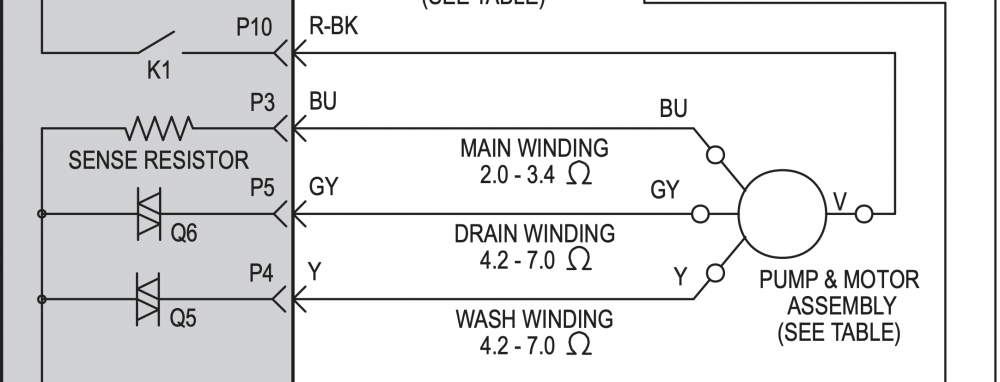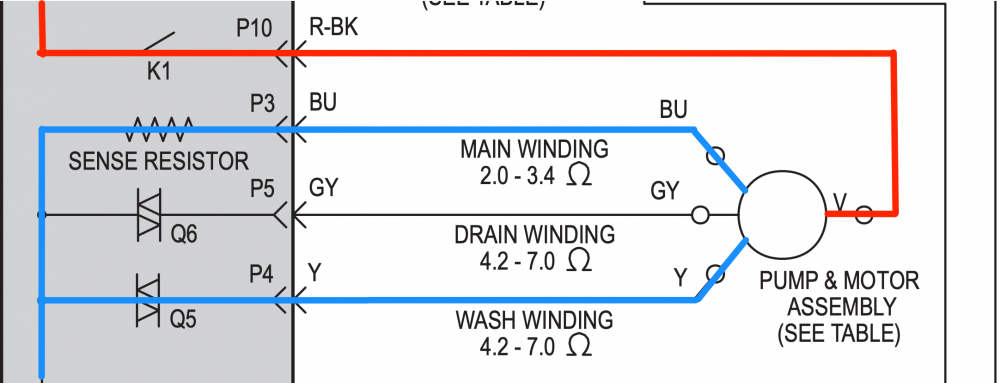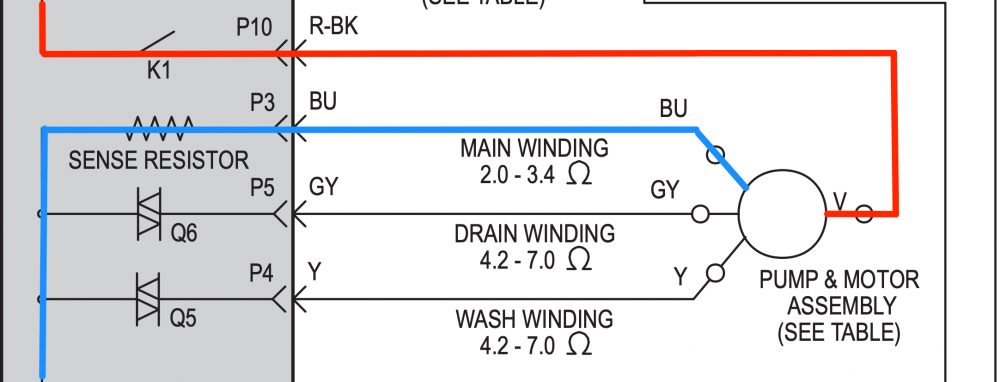Take a look at this motor circuit:

Three different windings? Triacs in the circuit? A “sense resistor”? What’s going on here?
As it turns out, there’s nothing really new or different happening here. In fact, all we’re looking at is a standard split-phase motor with two different start windings. One is the start winding when the motor functions as a drain pump, and the other is for when the motor functions as a wash pump.
Here’s what the circuit looks like when the drain winding is energized:

Conversely, if the wash winding is energized, the circuit looks like this.

That’s all well and good, but how does using the drain or wash winding to start the motor affect whether it drains or washes?
This all has to do with the physical construction of the motor. It’s built so that, if it spins in one direction, it will drain. If it spins in the other direction, it will wash. Because of the different magnetic fields generated by the drain winding and the wash winding relative to the main winding, one start winding will cause the motor to spin in one direction, and the other start winding causes it to spin in the other direction.
As for those triacs and the sense resistor, their job is pretty simple. The board switches each triac using a low DC gate voltage, and it watches the sense resistor to see how much voltage is being dropped across it. It can tell based on the voltage drop of the sense resistor if the motor is actually running.
So whether in drain or wash, once the motor gets running and the board senses that it is running via the sense resistor, it shuts off the gate voltage to whichever triac was being used, leaving just the main winding energized.

And from there it runs like any other single-phase motor.
The lesson here is that all split-phase motors work in fundamentally the same way. You have a main winding, and you have another winding that is only kept in the circuit temporarily to get it going from a dead stop. Don’t get thrown when you see this technology implemented in slightly different ways — just because you’ve got a triac or two doesn’t change anything about how these motors work.
Want to learn to troubleshoot motors, circuits, and all other aspects of appliances with ease? Click below to check out our Core Appliance Repair Training course right here at the Master Samurai Tech Academy.